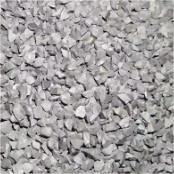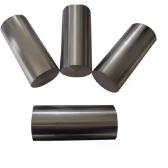**Title: “Shine Your Chrome: Can a Vibratory Tumbler Rescue Pot Metal?”**
(Can You Use A Vibratory Tumbler To Polish Chrome Plated Pot Metal)
Chrome-plated pot metal parts look great when they’re new. Over time, though, they lose their shine. Scratches, tarnish, or dull spots creep in. Maybe you’ve got an old car part, a vintage lamp, or a motorcycle trim piece sitting around. You want to restore its glow. A vibratory tumbler is a tool often used for polishing rocks, metal parts, or jewelry. But can it handle something as delicate as chrome-plated pot metal? Let’s dig in.
First, understand what a vibratory tumbler does. It’s a machine filled with abrasive media—like ceramic chips, plastic pellets, or walnut shells. When turned on, it vibrates rapidly. The parts inside get rubbed against the media, smoothing out rough edges or polishing surfaces. People use it for deburring metal, cleaning rust, or prepping items for plating. It’s efficient for bulk work.
Now, chrome plating on pot metal is thin. Pot metal itself is a cheap alloy—zinc, aluminum, and tin mixed together. It’s prone to cracking, warping, and corrosion. The chrome layer is just a shiny shell. Scratch through it, and the dull base shows. This makes polishing tricky. Aggressive methods risk stripping the chrome entirely.
So, can a vibratory tumbler polish chrome-plated pot metal without ruining it? Maybe. It depends on three things: the media you use, the condition of the chrome, and how long you run the machine. Start gentle. Soft media like walnut shells or corn cob grit are less likely to scratch. Avoid harsh materials like steel shot. Run the tumbler for short cycles—10 to 15 minutes at a time. Check the progress often.
Testing helps. Take a small, unimportant piece of chrome-plated pot metal. Drop it in the tumbler with mild media. After a cycle, inspect it. If the chrome looks brighter without scratches, you’re good. If the plating flakes or wears off, stop. The tumbler’s motion might be too rough for fragile chrome.
Another factor is the original quality of the plating. Older items or cheaply made parts often have thin chrome layers. These might not survive tumbling. High-quality, thick chrome plating has a better chance. Still, there’s risk. Vibratory tumblers work by friction. Even soft media rubs constantly against the surface. Over time, this could thin the chrome.
What if the chrome is already peeling or pitted? Tumbling might make it worse. Loose chrome flakes could break off during the process. This leaves uneven patches. For damaged pieces, hand-polishing with a chrome-safe compound is safer. Use a microfiber cloth and gentle pressure. It takes longer, but preserves the plating.
Vibratory tumblers excel at large batches. Say you’ve got a box of small chrome-plated brackets or knobs. Tumbling them together saves time. Just keep the media non-abrasive and monitor closely. For bigger items like car bumpers, the tumbler’s size becomes a problem. Most home tumblers fit only small parts.
Heat is another concern. Tumbling generates friction, which creates heat. Pot metal warps under high temperatures. Short cycles prevent overheating. Let the tumbler cool between runs.
Some DIYers mix polishing compounds into the media. This adds extra shine. Be cautious. Certain compounds contain chemicals that react with chrome. Check labels or test a small area first.
(Can You Use A Vibratory Tumbler To Polish Chrome Plated Pot Metal)
In the end, a vibratory tumbler can help refresh chrome-plated pot metal—if done carefully. It’s not a magic fix. Assess the item’s condition, choose mild media, and keep tumbling time short. For valuable or sentimental pieces, consider professional replating instead. No tool replaces a flawless chrome finish, but with patience, you can bring back some sparkle.
Inquiry us
if you want to want to know more, please feel free to contact us. (nanotrun@yahoo.com)


